Coding Qualitative Data
Overview
Hands-on session using coding schemas and advances in AI.
Larry Vincent,
Professor of the Practice,
Marketing
MKT 512
September 30, 2025

Approaches
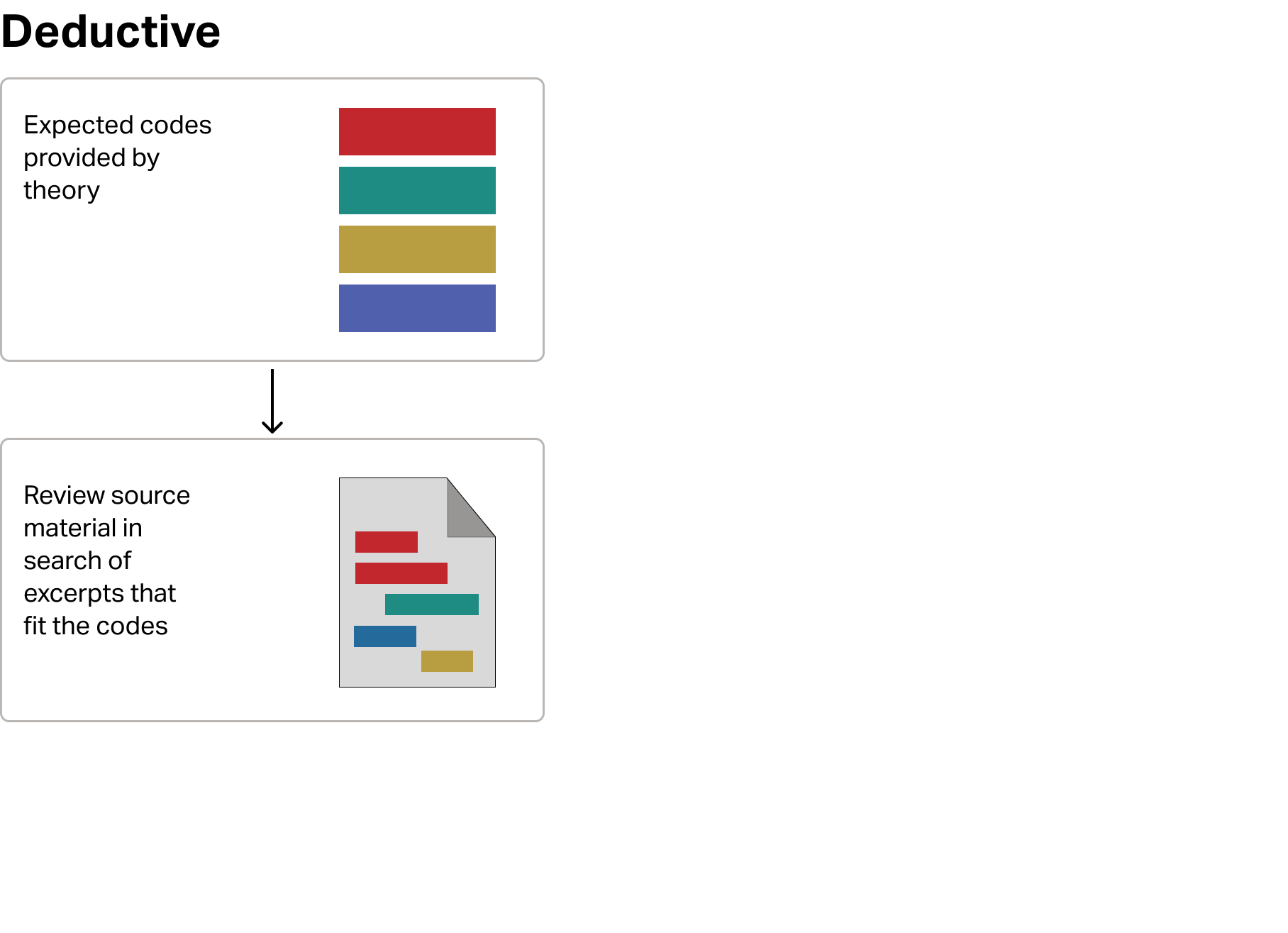
Deductive example
Self-determination theory (SDT) focuses on three basic psychological needs: autonomy, competence, and relatedness.
Self-Determination Theory
Autonomy–The need to feel in control of one’s own behaviors and goals, experiencing a sense of volition and willingness in one’s actions rather than feeling externally controlled or pressured.
Competence–The need to feel effective and capable in one’s activities, experiencing mastery and success in challenging tasks within one’s environment.
Relatedness–The need to feel connected to others, experiencing a sense of belonging, care, and meaningful relationships with other people.
Deductive example

Your turn

- Read the transcript excerpt
- Highlight or mark quotes that connect to one of the three SDT dimensions
Deductive example
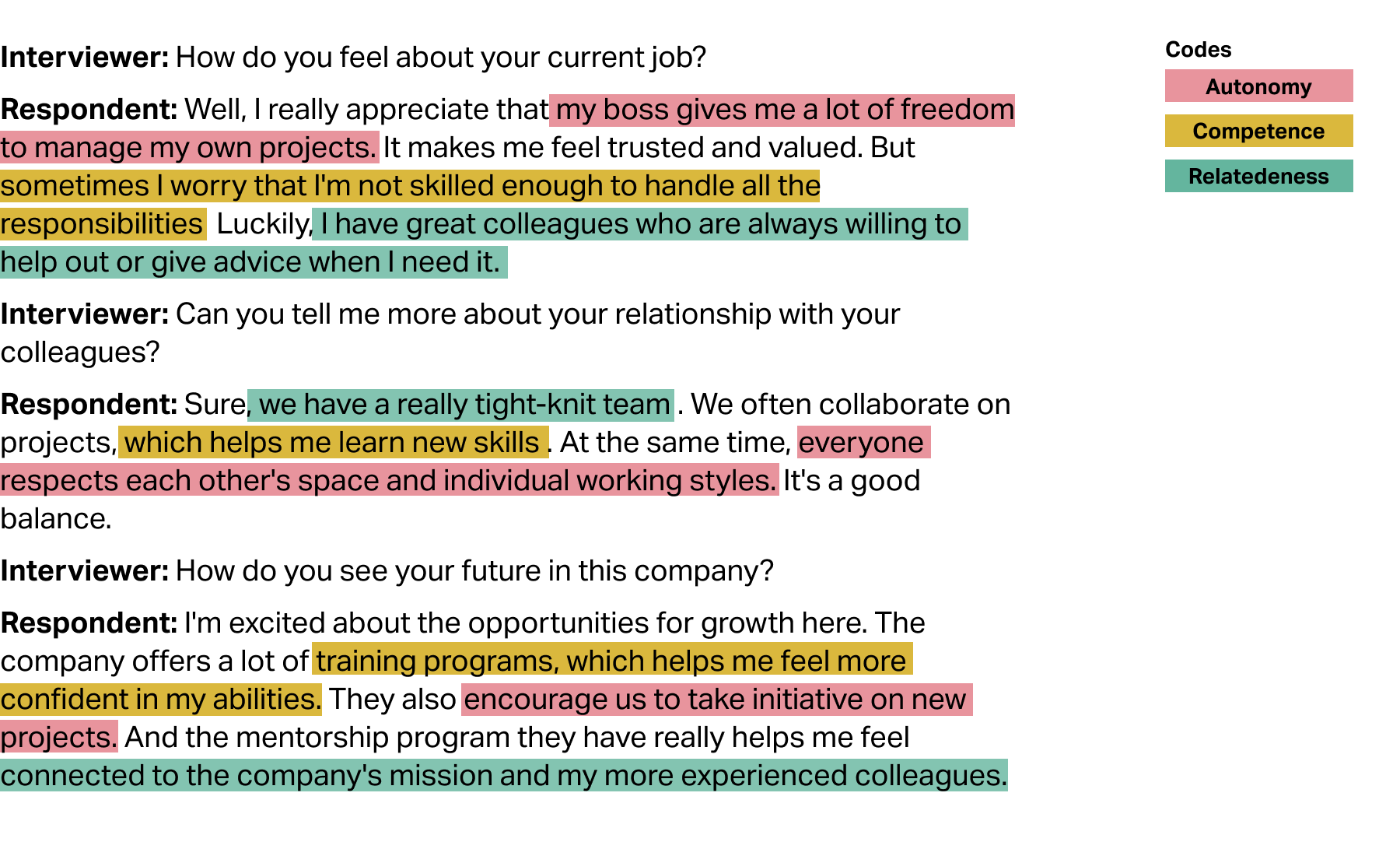
Approaches
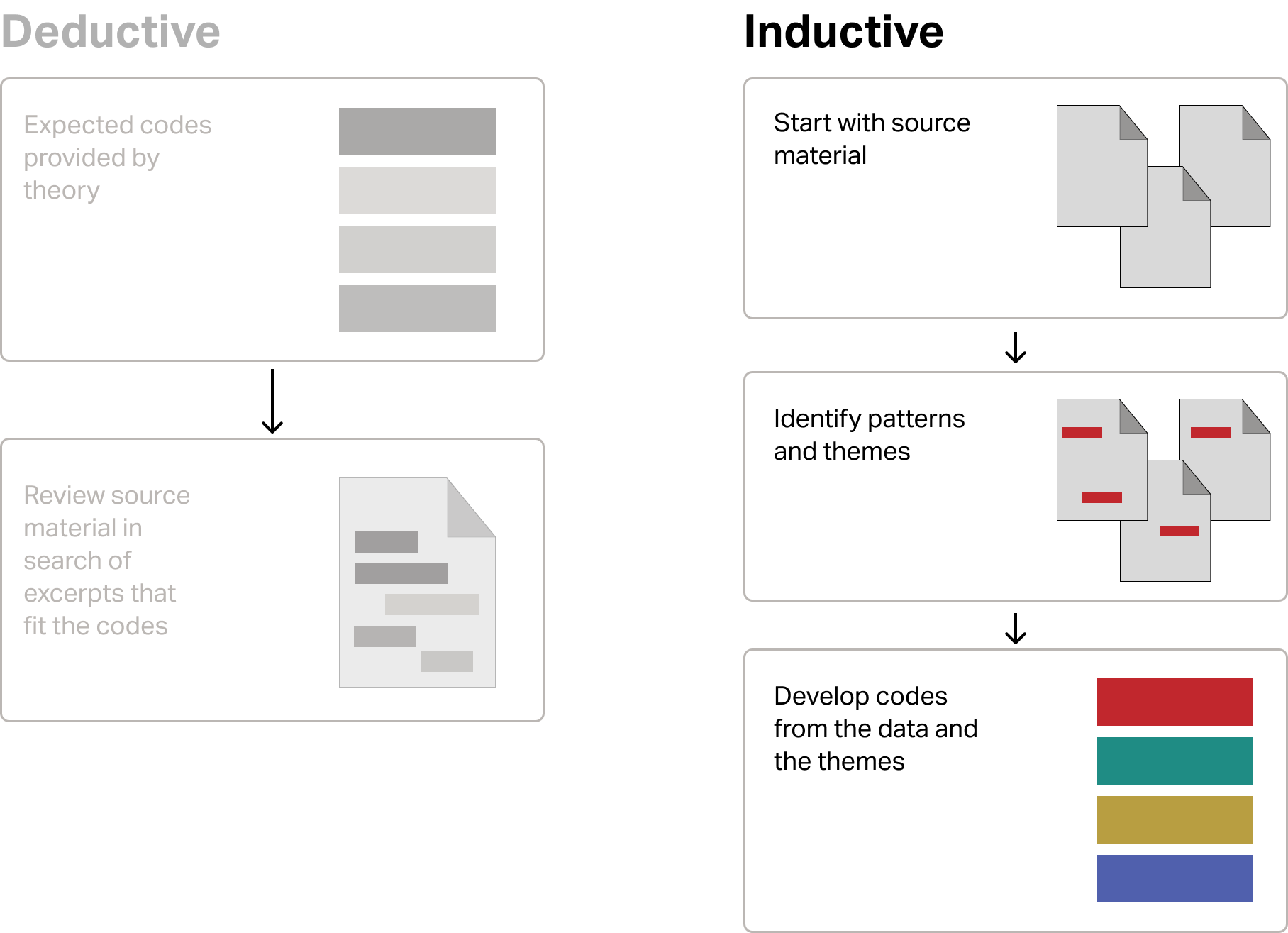
Inductive example

Your turn

- Read the transcript excerpt
- Brainstorm with your team about themes
- Code the themes by highlighting or marking quotes
- You can use AI to help you, but you should evaluate AI’s categorization
Inductive example

Inductive example

Inductive example
- Time management
(early rising, strict work hours, after-hours work) - Role juggling
(parental responsibilities, work responsibilities, personal needs) - Emotional challenges
(guilt, exhaustion, self-doubt) - Coping strategies
(self-care, prioritization, mindfulness, asking for help, setting boundaries) - Self perception
(doing one’s best, self-compassion)
Approaches
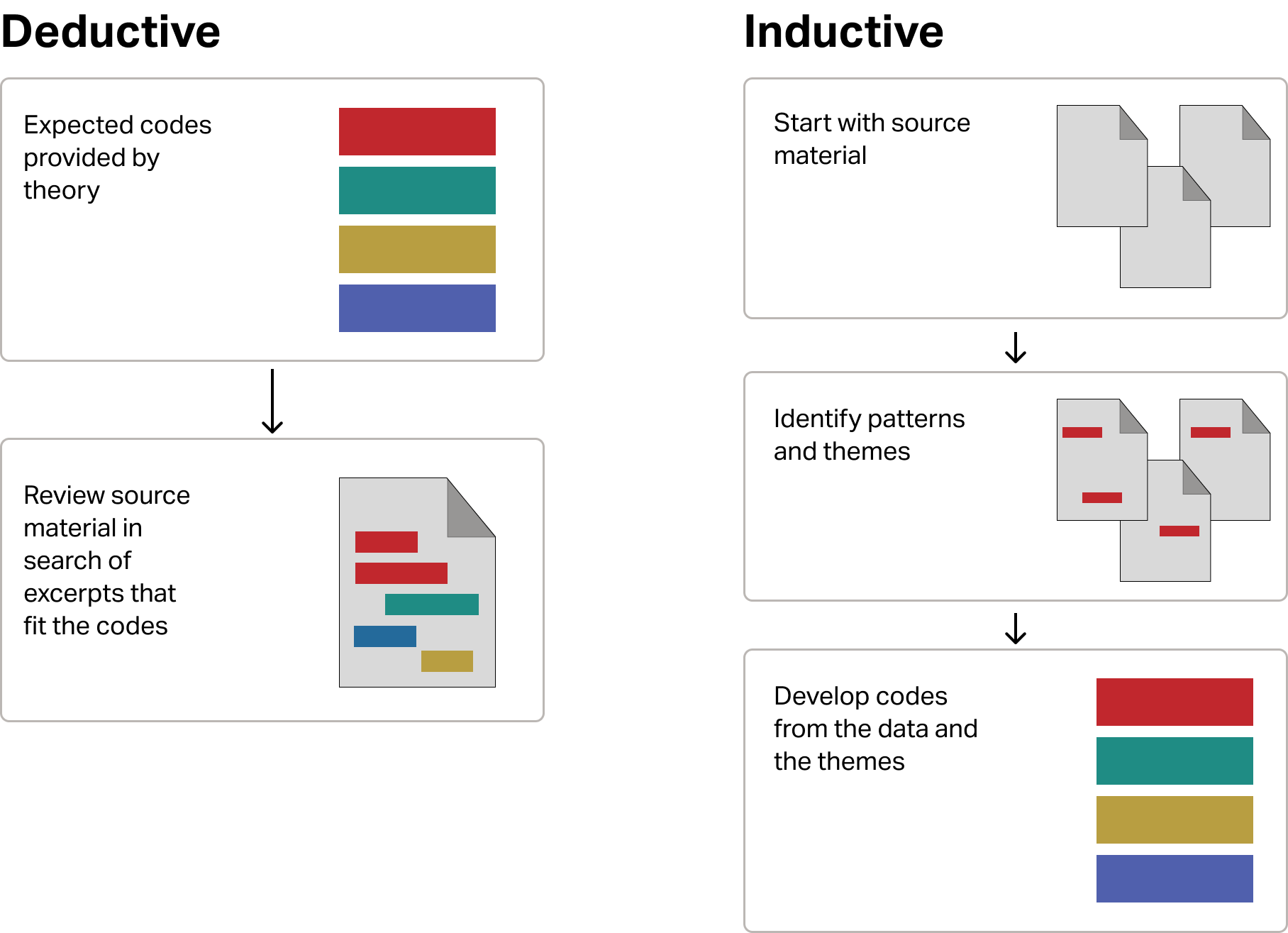
Codebooks

Codes are interpretive tools, not measurement instruments.
Core principles
- Use codes to organize, retrieve, and compare data across segments.
- Frequency does not equal importance in qualitative work. Context is rarely captured in counts.
- Use descriptive statistics only … and cautiously.
- Never use inferential statistics on qualitative codes.
Resist the urge to quantify qualitative research.
Quantifying Qual
Why quantifying qual is dangerous
- False precision and invalid measurement.
- Frequency doesn’t necessarily equal meaning or importance.
- Non-representative samples can’t support statistical claims.
- Quantification obscures the interpretive nature of the work.
Acceptable ways to show proportions
- Descriptive transparency about your specific sample.
(“Six of nine participants”, “a majority of interviewees”, “a few mentioned”) - Showing diversity and range of perspectives–enrich understanding of variation rather than claim representation.
- Intentional mixed methods design.
The Coding Process
- Start with immersion. (Read many times before coding!)
- Develop codes iteratively.
- Code for retrieval and comparison. (What will I want to find again? What do I need to compare?)
- Use codes to gather related segments, then analyze those segments.
(What variations do you see? What’s the context? What’s missing from this category?) - Create memos constantly. (You might not remember why you coded as you did, so document it!)
Coding with AI
Use AI to generate initial code suggestions from sample data, but critically evaluate and refine them based on your expertise.
Have AI identify potential themes or patterns in coded segments. (Treat these as hypotheses to verify by returning to your data)
Use AI to help organize and synthesize across many coded excerpts, but verify its interpretations.
Ask AI to challenge your coding scheme.
(What might I be missing? What alternative interpretations exist?)
Never let AI replace your deep engagement with the data. AI can be a thought partner but shouldn’t do your interpretive work.
The analyst mindset

From coding to theory
Theory as Output
Qualitative analysis can identify constructs, relationships, and mechanisms that become
the foundation for models.
Example: MBA motivation study
- Interviews revealed 23 distinct motivations
- Qualitative analysis showed how they relate
- Became scale items for quantitative validation
Theory as Input
Published frameworks can inform your coding and connect your work to established literature.
When coding with theory:
- Use validated constructs as initial codes
- But remain open to emergent patterns
- Document where your data diverges from theory
MoVA Model
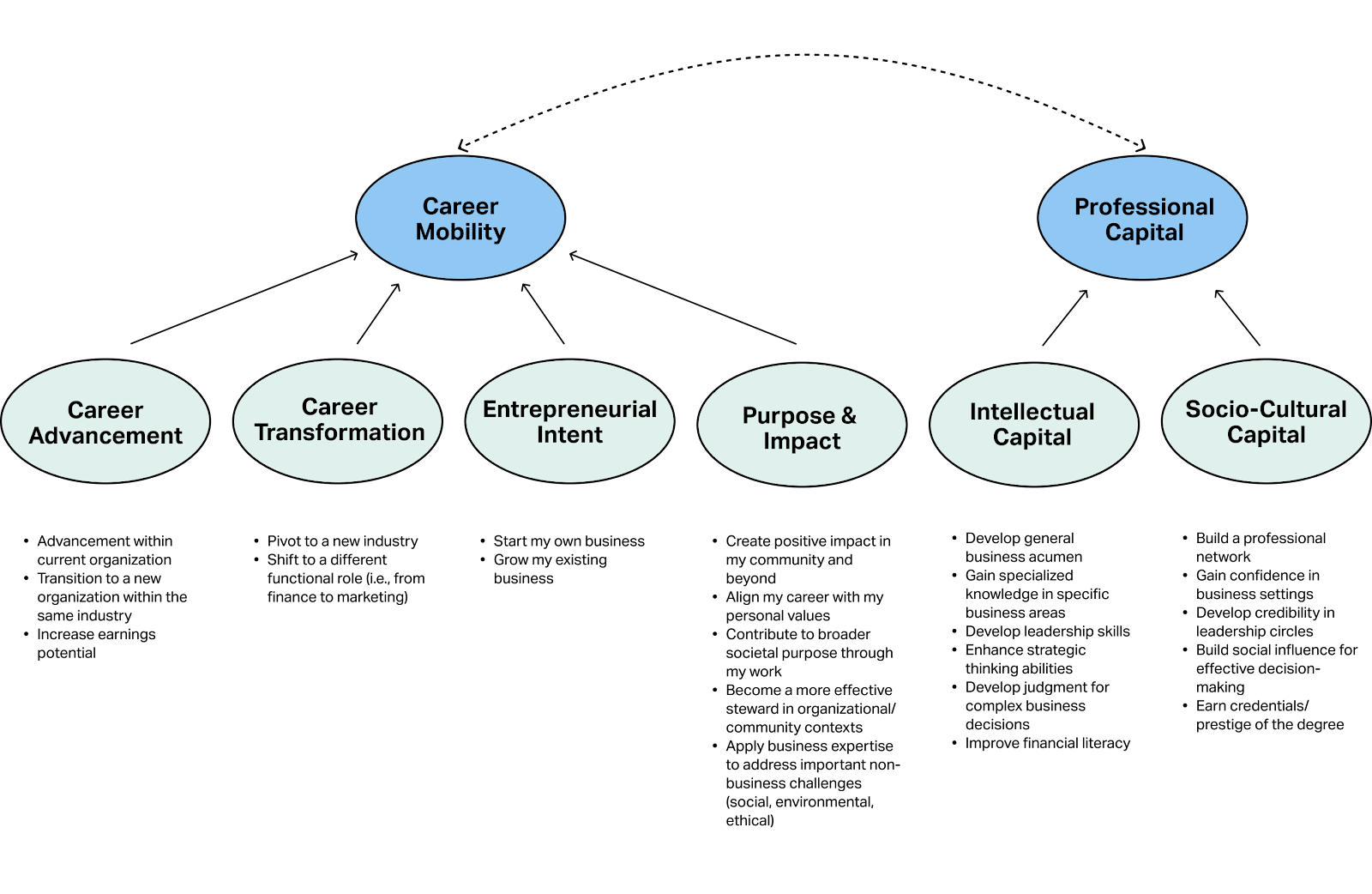
Present qualitative findings qualitatively.
Qualitative presentation
Takeaways
- Coding is a process of extracting key patterns and underlying themes from qualitative data
- AI is an increasingly useful tool in qualitative data planning, collection and interpretation, but it has limitations
- Coding is especially important on large projects and in projects where a team of researchers are collaborating to explore the subject
- Coding can also serve as a critical bridge to quantitative work
